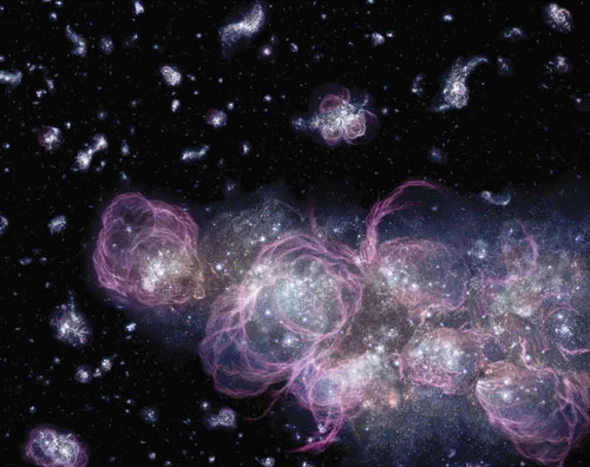
Scientists have discovered the “fingerprints” of the universe’s initial star explosions. The discoveries could help scientists understand what happened when the first stars were created following the Big Bang.
“For the first time ever, we were able to identify the chemical traces of the explosions of the first stars in very distant gas clouds,” said Andrea Saccardi, who led the study.
Scientists believe that the first stars created 13.5 billion years ago, would have looked considerably different from those surrounding us today. They were simpler, composed of hydrogen and helium, and possibly hundreds of times larger than our Sun.
They were assumed to have died soon after birth in massive explosions known as supernovae. This would have ejected heavier elements into the gas surrounding them, causing new stars to form and eject even more heavy elements.
That process was critical in the formation of the universe we live in today. Scientists, however, are having difficulty learning about them because they have died extinct.
However, researchers can better understand them by discovering the chemical elements that were left behind when they died. Researchers have done just that, thanks to the European Southern Observatory‘s Very Large Telescope.
Discovery of distant Gas Clouds provides clues to Universe’s Early Stars
Scientists discovered three distant gas clouds when the cosmos was only 10% or 15% of its present age. Based on the chemical fingerprints they left behind, scientists believe these are the remnants of those ancient stars.
They discovered them by hunting for quasars, which are brilliant light emissions powered by supermassive black holes. As they travel through the universe, they pick up signatures of the gases they have passed through, which scientists can see using Earth-based technology.
Scientists hope that the residual data can be utilized to better comprehend the early stars and thus provide a picture of how the universe evolved from simple elements to the powerful, complex stars that surround us today.
The discoveries are presented in a new paper published in the Astrophysical Journal titled “Evidence of first stars-enriched gas in high-redshift absorbers.”





